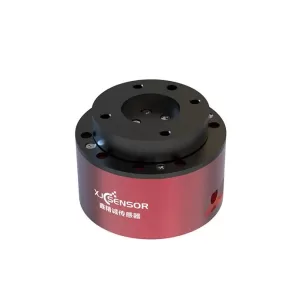In the field of force measurement, precision is paramount. As industries strive for higher accuracy and more comprehensive data, 3-axis force sensors have emerged as a game-changer. These advanced sensors have revolutionized force measurement by enabling simultaneous measurements along three orthogonal axes – X, Y, and Z. In this blog post, we will explore the advancements and applications of 3-axis force sensors, delving into their working principle, key features, benefits, and the diverse industries they serve.

Understanding 3-Axis Force Sensors
What Are 3-Axis Force Sensors?
3-axis force sensors, also known as triaxial force sensors, are highly sophisticated devices designed to measure forces applied along three perpendicular axes. Unlike single-axis or dual-axis force sensors that provide limited information, 3-axis force sensors offer comprehensive force measurement capabilities, capturing multidimensional forces with accuracy and precision. This enables a deeper understanding of force distribution and dynamics in various applications.
How Do 3-Axis Force Sensors Work?
Key Features and Advancements
- Simultaneous Multidirectional Measurement: With three orthogonal axes, 3-axis force sensors capture force data from all directions, providing a complete picture of force distribution. This allows for precise analysis, control, and optimization of forces in complex systems and applications.
- Enhanced Sensitivity and Resolution: Advancements in sensor technology have led to increased sensitivity and resolution in 3-axis force sensors. These sensors can measure even the smallest variations in force, making them suitable for applications that require high precision and delicate force analysis.
- Compact and Lightweight Design: Many 3-axis force sensors are designed with compact and lightweight form factors, allowing for easy integration into various systems without compromising performance or adding excessive weight. This versatility makes them ideal for applications where space is limited.
- Low Crosstalk and Interference: Advanced designs and signal processing techniques in modern 3-axis force sensors minimize crosstalk and interference between different axes. This ensures that force measurements remain accurate and reliable, even when multiple forces act simultaneously along different directions.
Applications of 3-Axis Force Sensors
Robotics and Automation

Aerospace and Defense

Biomechanics and Human Factors Research

Automotive Engineering

Research and Development

Benefits and Future Perspectives
Comprehensive Force Analysis
Real-Time Monitoring and Control
Improved Safety and Reliability
Integration with Advanced Technologies
Miniaturization and Portability
At force sensors supplier XJCSENSOR, we are committed to delivering cutting-edge 3-axis force sensors that meet the highest standards of accuracy, reliability, and durability. Contact us today to discuss your force measurement needs and let us be your trusted partner in unleashing precision for your applications.


